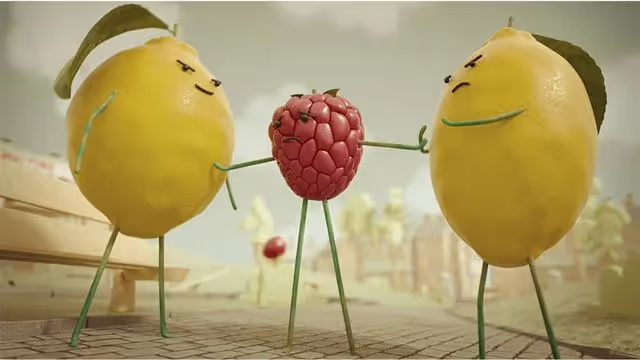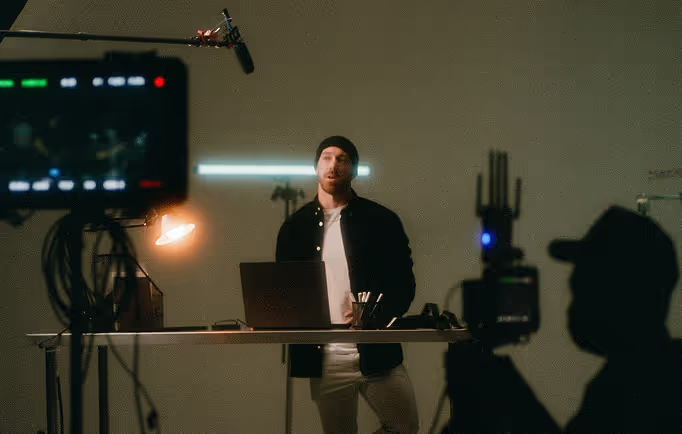Why animated video is the future of advertising

Every week some chump on the internet writes a new article about ‘why blank is the future of BLANK!’ and the 10 ways kale actually grants you the power of time travel. Well strap yourselves in, because today that chump is us. Minus the kale. Okay, maybe a little bit of kale.
We’re talking about advertising, the ever-increasing role animated video is playing in creating an effective campaign, and why the animation/advertising partnership is not only here to stay, but on track to be an increasingly major player in the future.
the future of advertising is not advertising
“If brands provide interesting content, interesting offers, interesting conversational pieces, [and] some entertainment then they have more chance of people spreading it without having to spending media dollars.” [Source: midigital.co]
It’s the dream of many a brand to become so successful that the social buzz around them is basically self-sustaining. Exactly how to do this can be hard to pinpoint and even harder to pull off. We’re in a fluctuating age where the rules of what works and what doesn’t in digital virality change daily.
We are, however, reaching a point where the needs and motives behind viral-style content is becoming clearer, and the answer points toward the consumer’s hunger for 1) true entertainment, and 2) sincere engagement.
‘True entertainment’ means entertainment for its own sake, without the looming big brother of advertisement or product placement. One example is sponsoring the creation of branded web series, such as NikeWomen’s Youtube show Margot vs. Lily. The brand name becomes associated with enabling quality content, rather than shoehorning the name into the content with ads that interrupt the viewing experience. The idea is to provide entertainment and content of interest through a medium which is developed from artistic entertainment.
‘Sincere engagement’ can include consumer to brand, consumer to creator or consumer to consumer conversation, across multiple platforms, made as direct as possible without becoming meaningless from over-saturation. The role of conversing with consumers on social media is an increasingly important one for businesses wanting to spread their ethos through online community building, and animated GIFs (along with images, emojis, and other easily sharable visual content) are an increasingly important part of that conversation. This kind of content is readily instituted across most social media sites—and has even become the main focus of some, like Tumblr—pointing to the need for media that can keep up with changing platforms, which brings us to the next point:
evolving media is enduring media
“You must always be able to predict what’s next and then have the flexibility to evolve.” Marc Benioff
User engagement is evolving and calls for a visual medium that is capable of evolving with it on multiple platforms. The recent rise of synchronised campaigns—campaigns taking place across several media platforms—is an indicator of the need for a level of flux within the campaign’s creative medium.
Luckily this is where animation shines. Modern digital animation and motion graphics are developed by creating different assets (like icons, logos, characters, props) which are then composited together on a virtual ‘stage’. Because the assets begin life separately they’re more easily editable during and after the fact, granting the ability to edit the same assets, colour schemes and visual motifs into different formats and dimensions. It’s for these reasons animation can be used to create a more tightly thematic campaign with less fuss than trying to redesign ‘flattened’ types of media like pure live-action.
But the ability to evolve with different online platforms is only half the battle: evolving technology is the second test of a medium’s ability to stand the test of time.
animation is inherently on the forefront of new technology
“Animation and technology cling together like an untied shoelace and a bicycle spoke.” [Source: Me, just now.]
It seems the further animation progresses, the more interlinked it becomes with the technology that enables it. While purely non-digital forms of animation still exist, they’re becoming increasingly rare as the workflow becomes ever more digitised. This means animators and the animation industry at large are often at the forefront of new technology news, staying ahead of the curve so their skills stay not just fresh and up-to-date, but simply compatible with upcoming technologies.
The benefit of this in the advertisement field is a greater reassurance of fresh content: visual styles and techniques that audiences haven’t yet become desensitised to, and the use of technologies that promote engagement with the animation rather than idleness. Virtual and Augmented Reality are some up-and-coming examples, and the benefit in partnering with an animation house that is on the forefront of these technologies is strong—for use in sponsored app development, interactive advertisements, brand-themed augmented games or virtual walk-throughs of products, to name a few applications.
the stats are long-term swinging away from text and toward short-form visual media.
“Kale is a superfood, and its special power is tasting bad.” [Source: Jim Gaffigan]
I promised a little bit more kale and you got a little bit more kale. And it seems ‘a little bit’ is more than enough, because if there’s one thing most of us can see on the horizon of the future (besides an intensified bitterness toward kale), it’s an increasing swing toward quick consumption of information. About 90 percent of the information our brains pick up is visual, and I’m going to stop the stats there because I’m sure you’ve heard a variation of this a hundred times over.
Short visual media like videos and GIFs allow for fast engagement and small file sizes accessible on portable devices. The hard part, from a content producer’s perspective, is developing a message that’s coherent enough to get across within the first 10 seconds, and clear enough to read well on increasingly small devices.
The clean-cut style of modern motion graphics and explainer animations have honed in on this trend, often utilising bright colours and simple character designs that the eye can interpret with little effort. Furthermore, the scriptwriting format of explainer videos is designed with an information funnel in mind: starting first with establishing the consumer need and offering a handy solution (the product), then progressively funnelling down into more specific detail about the product.
Start a






